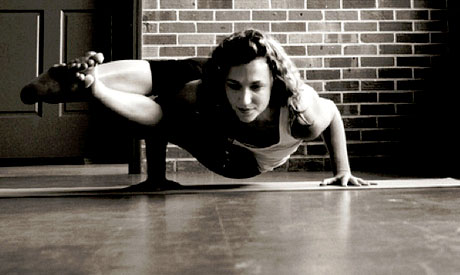
As discussed in “Are You A Poser: Get Enlightened With the Eight Limbs of Yoga”, The physical practice of yoga is just one of eight parts of a total system with the goal of enlightenment – where enlightenment refers to the transcending of the mind to connect with the universal “self” that is said to exist beyond all conscious thought. These eight parts – or “limbs”, as they are more commonly known – were codified in the Yoga Sutras of Patanjali.
The physical practice is the third “limb” listed in the Sutras. The first two are the “Yamas” (five practices of self-restraint consisting of non-harm, no-lying, non-stealing, non-wasting of energy and non-coveting) and the “Niyamas” (five affirmative practices consisting of cleanliness, contentment, discipline, self-study and surrender). As noted in Are You A Poser, the Yamas and the Niyamas together form a blueprint for how to live one’s life in a way that removes the obstacles along the path to enlightenment. None is more “important” than the other. However, the first Yama, “Ahimsa” – non-harm – underpins virtually all of the others and guides us in practicing the others.
The practice of Ahimsa means simply “not doing harm”. It does not distinguish between doing harm to others versus doing harm to onesself, or between harm as done to humans or animals or objects. Of course, this would seem to go without saying, since in an enlightened state, there is no such distinction. In fact, Sutra 2.35, which codifies “Ahimsa”, states nothing more than the fact that one’s practice of Ahimsa will reduce feelings of hostility in others. Implicit in this is the notion that our yoga practice is inextricably intertwined with our relationships with those around us. The feelings of others will have an effect on our yoga practice, and our actions will have an effect on the feelings of others.
Perhaps the most visceral way to experience the benefits of practicing Ahimsa is to consider “non-harm” in the context of Asana – the physical practice of yoga. When we fail to practice Ahimsa in our Asana practice, we risk injury not just to our bodies, but to our emotional and spiritual well-being.
When we cause pain in our bodies, we can experiece all manner of negative emotions: anxiety, sadness, anger, to name a few. Whether the physical pain makes us unable to practice Asana, or whether the emotional pain causes us to be unwilling to practice Asana, we are now left with an obstacle to the practice of one of the eight limbs, which is itself an obstacle to the practice of yoga. This has an effect on those who surround us – our friends and family and coworkers feel the difference in us. Their suffering causes us to suffer further. We suffer further, and others suffer further still. And so on.
It is unrealistic to hope to never cause harm, particularly since in the absence of enlightenment, each individual has their own mind and their own thoughts about how harm is defined (for example, you may believe that eating meat is a form of harm, while your friend may not). However, we can do the best that we can do. And we can begin by observing the practice of Ahimsa on the mat.
Photo Credit: Go Interactive Wellness




